Inbox and Environment News: Issue 432
December 8 - 14, 2019: Issue 432
Narrabeen's Octopus
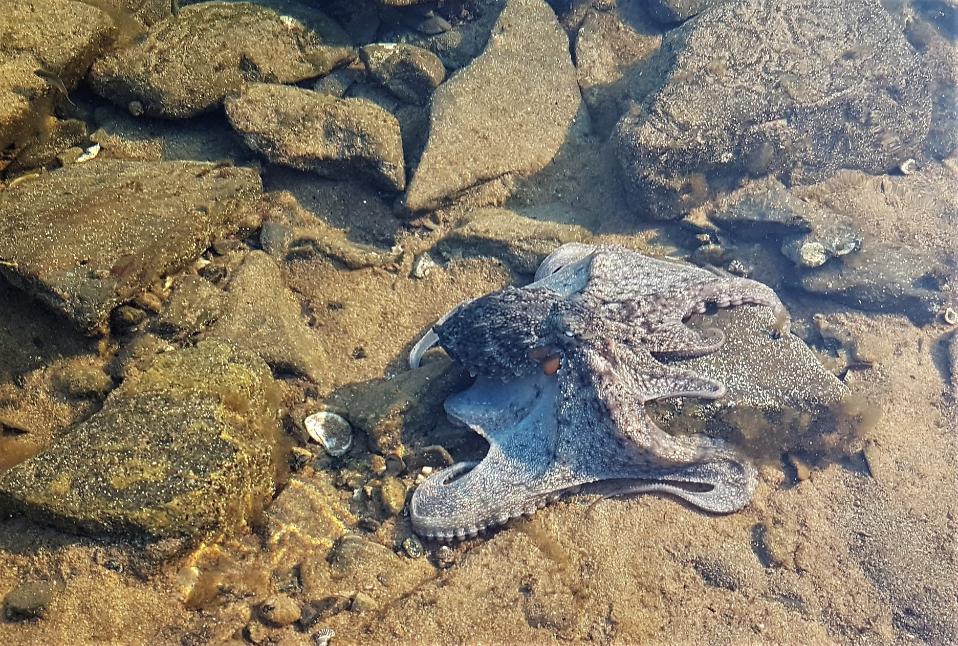
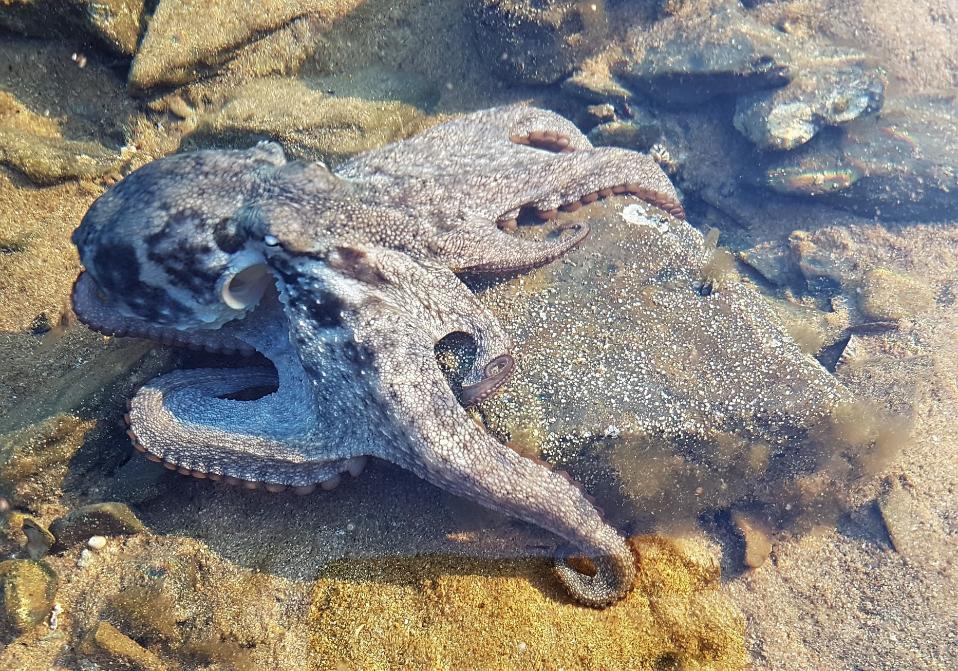
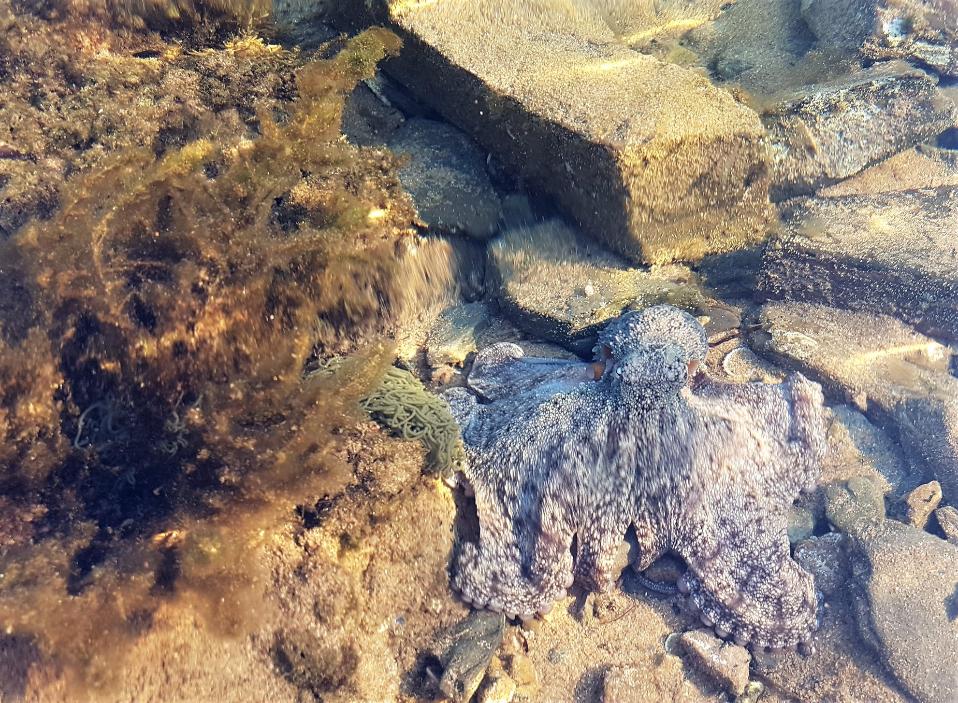
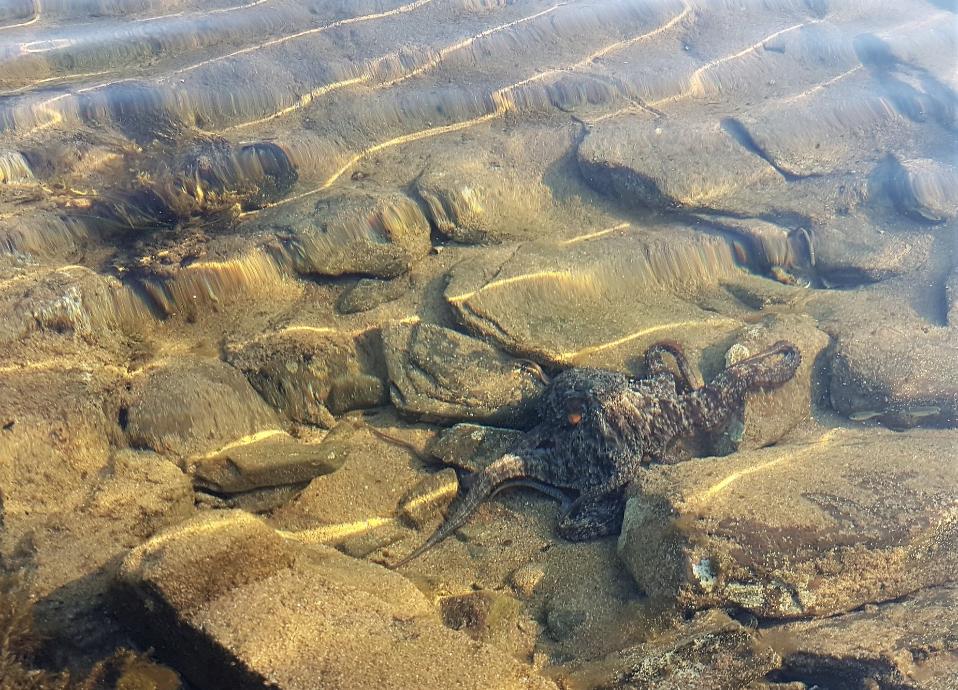
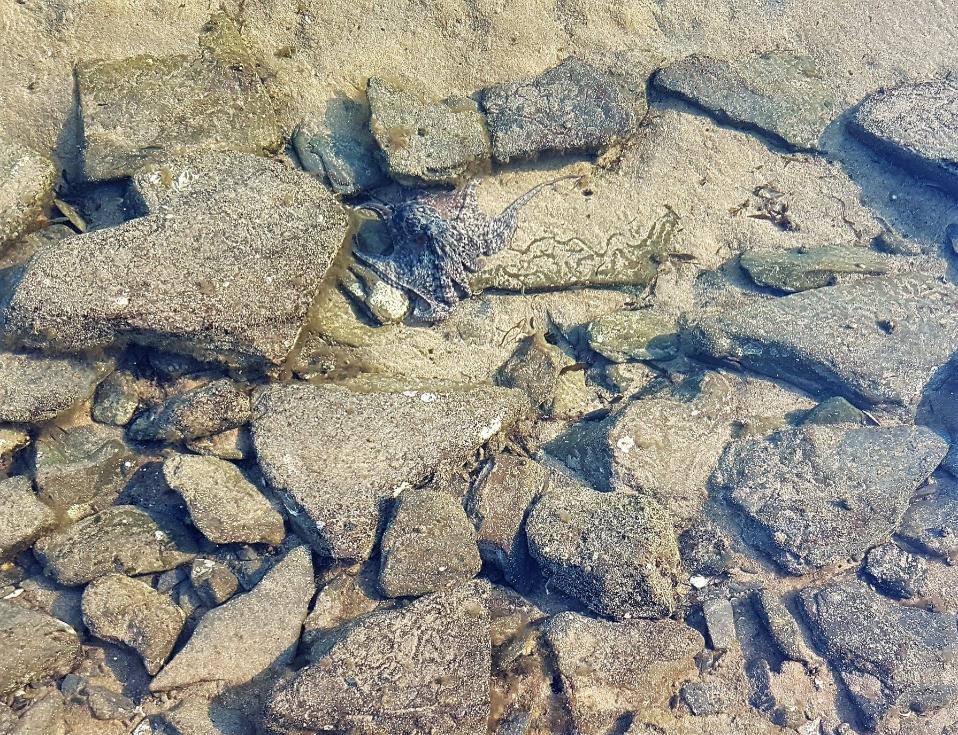
Dense Bushfire Smoke Impacting Pittwater
Geminids 2019
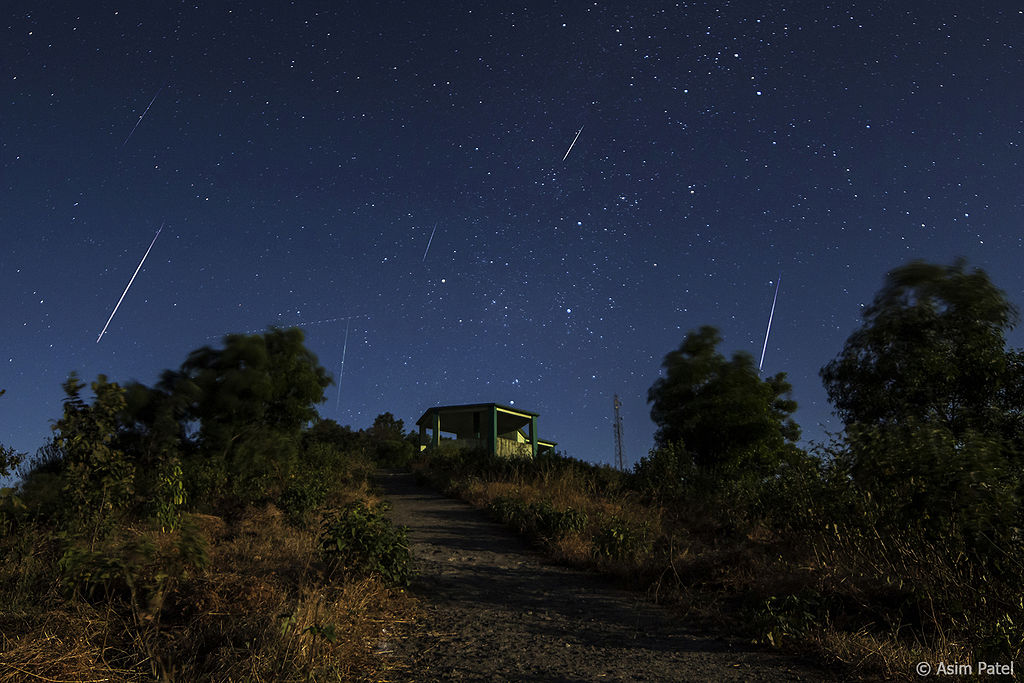
Two-Year-Old Return And Earn Keeps Delivering
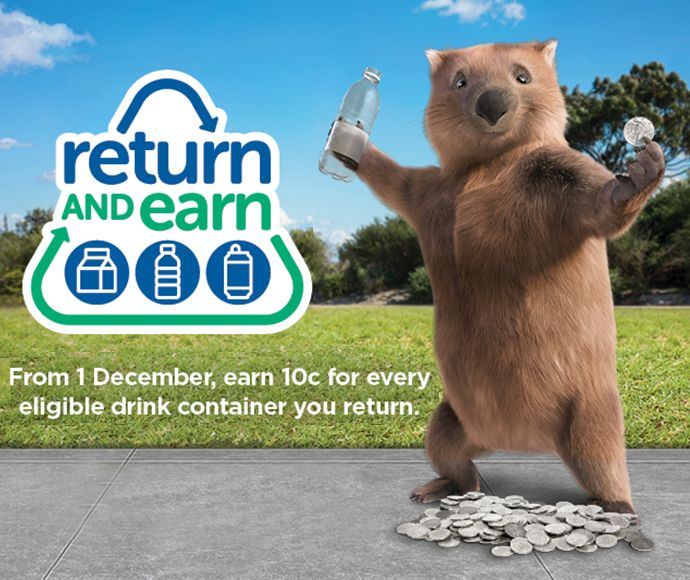
Scientists fear insect populations are shrinking. Here are six ways to help
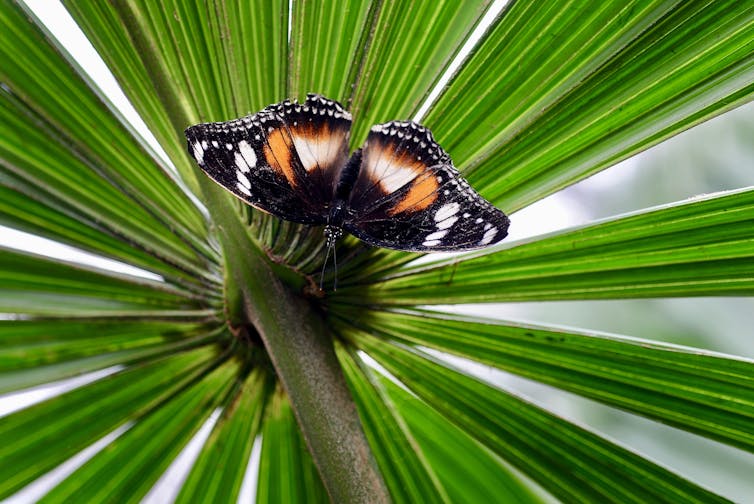
Are you planning a big garden clean-up this summer, or stocking up on fly spray to keep bugs at bay? Before you do, it’s worth considering the damage you might cause to the insects we share the planet with.
Australia’s insect populations are under pressure. The problem is better known in the Northern Hemisphere, where over the past few years scientific studies have reported alarming declines in insect numbers.
We don’t yet have a true understanding of what is happening in Australia. This week, scientists gathered in Brisbane at the Australian Entomological Society conference to discuss the extent of the problem. Evidence suggests several species and populations are under threat.
Some might see insects as small and insignificant, but they perform functions crucial to sustaining life on Earth. There are several simple steps you can take to address insect decline in your area, or even help scientists keep tabs on the problem.

We Need To Know More
In Australia, we know iconic species such as the bogong moth, green carpenter bee and Key’s matchstick grasshopper are in decline. There is documented evidence for the extinction of two Australian insect species, but this is probably just the tip of the iceberg.
A research review published this year suggested more than 40% of insect species globally are threatened with extinction over the next few decades. However, this estimate was based on limited studies of a few iconic insect groups in western Europe and the US.
Read more: Scientists re-counted Australia's extinct species, and the result is devastating
Such findings should be taken with caution. We do not have enough evidence to extrapolate to the whole planet.
Despite this, factors affecting insect populations overseas – such as habitat loss, climate change and insecticide use – most likely also apply in Australia. Bushfires and drought on this continent can also affect insect populations.
There are no published studies documenting insect decline in Australia, but anecdotal reports from entomologists suggest lower than average populations across a number of species. However, very few of our estimated 250,000 insect species are being formally monitored.
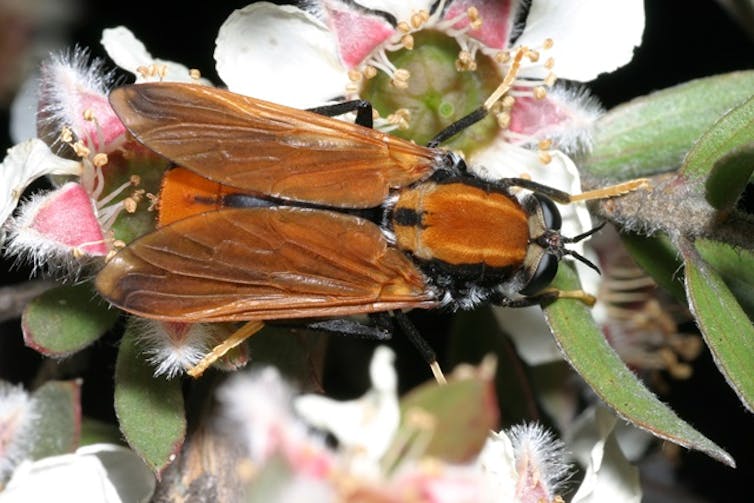
Why You Should Care
Insects pollinate plants, dispose of waste and control pests, among other functions. The planet would cease to support life without the services insects provide.
If insect populations are in decline, so are the populations of larger animals such as birds and lizards that feed on them.
In NSW, bogong moths are a staple food for mountain pygmy possums. A collapse in the moth population would lead to possums going hungry, which affects their breeding success.
Australia’s threatened species strategy prioritises action to protect 20 bird species – 14 of which feed partially or solely on insects.

Six Ways To Help Insects
Insects are small and can inhabit hidden places, so you may not realise how many exist around you. Here are a few ways to help prevent insect decline in your home and elsewhere:

1. Entice insects to your garden: Lawn is a virtual desert for insects, so if you don’t really need it, cultivate insect-friendly native plants instead. Plan to have something flowering most of the year and aim for a variety of plant heights and structures, such as tall trees, thick shrubs and ground cover.
2. Put the fly spray away: Insecticides have become very efficient in recent years. They indiscriminately kill all insects, not just the ones you’re trying to get rid of. If you have to use insect spray, do so sparingly.
And whenever you can, choose food produced without lots of pesticides. These products are sold with labels such as organic, biodynamic, or chemical-free.
3. Turn off the lights: If you don’t need that outdoor light on all night, turn it off: the moths in your area will thank you. Many nocturnal insects can’t resist the light, but it disrupts their navigation system. This plays havoc with their ability to feed and reproduce.
4. Build them a home: Think about installing an insect hotel – a small structure of hollows for insects to rest and lay eggs in. Or simply leave dead wood or small areas of bare ground for insects to build nests in. If you don’t have a garden, join a local tree-planting group, or convince your council to plant more natives.

Read more: How many species on Earth? Why that's a simple question but hard to answer
5. Resist the urge to clean up: If there is a section of your garden, local park or nature strip that is unkempt, leave it that way. What looks untidy to you is a great place for insects to live.
6. Track insects on your smart phone: Scientists need help to better understand what is happening to our insects. Citizen science apps such as iNaturalist Australia, Wild Pollinator Count, the Atlas of Living Australia and Butterflies Australia help gather valuable information about insect biodiversity, so solutions can be targeted to problem areas.![]()
David Yeates, Director of the Australian National Insect Collection, CSIRO; Katja Hogendoorn, University of Adelaide, and Manu Saunders, Research fellow, University of New England
This article is republished from The Conversation under a Creative Commons license. Read the original article.
Farmers Take New Acland Fight To High Court
Gas Inquiry Hearing Reveals NSW Government Is Unaware And Unprepared On CSG
Business Chamber's Gas Gullibility Lets Down Its Members
Global emissions to hit 36.8 billion tonnes, beating last year's record high
Pep Canadell, CSIRO; Corinne Le Quéré, University of East Anglia; Glen Peters, Center for International Climate and Environment Research - Oslo; Pierre Friedlingstein, University of Exeter; Robbie Andrew, Center for International Climate and Environment Research - Oslo; Rob Jackson, Stanford University, and Vanessa Haverd, CSIROGlobal emissions for 2019 are predicted to hit 36.8 billion tonnes of carbon dioxide (CO₂), setting yet another all-time record. This disturbing result means emissions have grown by 62% since international climate negotiations began in 1990 to address the problem.
The figures are contained in the Global Carbon Project, which today released its 14th Global Carbon Budget.
Read more: Eighteen countries showing the way to carbon zero
Digging into the numbers, however, reveals a silver lining. While overall carbon emissions continue to rise, the rate of growth is about two-thirds lower than in the previous two years.
Driving this slower growth is an extraordinary decline in coal emissions, particularly in the United States and Europe, and growth in renewable energy globally.
A less positive component of this emissions slowdown, however, is that a lower global economic growth has contributed to it. Most concerning yet is the very robust and stable upward trends in emissions from oil and natural gas.
Coal Is King, But Losing Steam
The burning of coal continues to dominate CO₂ emissions and was responsible for 40% of all fossil fuel emissions in 2018, followed by oil (34%) and natural gas (20%). However, coal emissions reached their highest levels in 2012 and have remained slightly lower since then. Emissions have been declining at an annual average of 0.5% over the past five years to 2018.

In 2019, we project a further decline in global coal CO₂ emissions of around 0.9%. This decline is due to large falls of 10% in both the US and the European Union, and weak growth in China (0.8%) and India (2%).
The US has announced the closure of more than 500 coal-fired power plants over the past decade, while the UK’s electricity sector has gone from 40% coal-based power in 2012 to 5% in 2018.
Whether coal emissions reached a true peak in 2012 or will creep back up will depend largely on the trajectory of coal use in China and India. Despite this uncertainty, the strong upward trend from the past has been broken and is unlikely to return.
Oil And Natural Gas Grow Unabated
CO₂ emissions from oil and natural gas in particular have grown robustly for decades and show no signs of slowing down. In fact, while emissions growth from oil has been fairly steady over the past decade at 1.4% a year, emissions from natural gas have grown almost twice as fast at 2.4% a year, and are estimated to further accelerate to 2.6% in 2019. Natural gas is the single largest contributor to this year’s increase in global CO₂ emissions.
This uptick in natural gas consumption is driven by a range of factors. New, “unconventional” methods of extracting natural gas in the US have increased production. This boom is in part replacing coal for electricity generation.
Read more: How to answer the argument that Australia's emissions are too small to make a difference
In Japan, natural gas is filling the void left by nuclear power after the Fukushima disaster. In most of the rest of the world, new natural gas capacity is primarily filling new energy demand.
Oil emissions, on the other hand, are largely being driven by the rapidly growing transport sector. This is increasing across land, sea and air, but is dominated by road transport.
Australia’s emissions have also seen significant reductions from coal sources over the past decade, while emissions from oil and natural gas have grown rapidly and are driving the country’s overall growth in fossil CO₂ emissions.
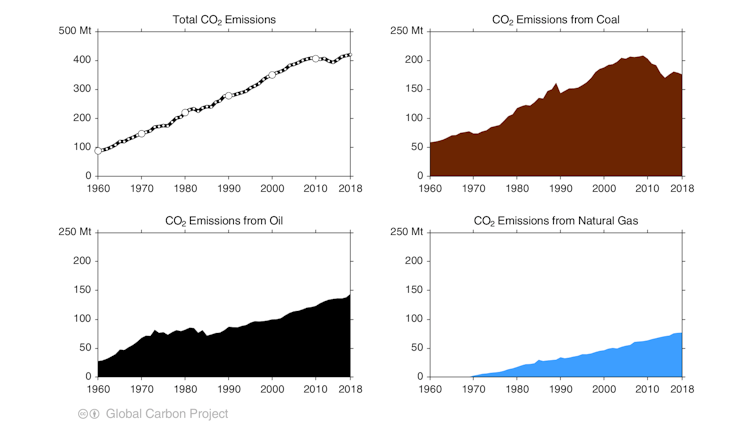
Emissions From Deforestation
Preliminary estimates for 2019 show that global emissions from deforestation, fires and other land-use changes reached 6 billion tonnes of CO₂ – about 0.8 billion tonnes above 2018 levels. The additional emissions largely come from elevated fire and deforestation activity in the Amazon and Southeast Asia.
The accelerated loss of forests in 2019 not only leads to higher emissions, but reduces the capacity of vegetation to act as a “sink” removing CO₂ from the atmosphere. This is deeply concerning, as the world’s oceans and plants absorb about half of all CO₂ emissions from human activities. They are one of our most effective buffers against even higher CO₂ concentrations in the atmosphere, and must be safeguarded.
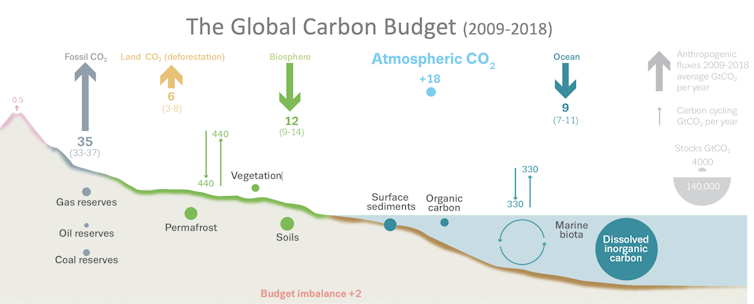
Not all sinks can be managed by people – the open ocean sink being an example – but land-based sinks can be actively protected by preventing deforestation and degradation, and further enhanced by ecosystem restoration and reforestation.
Read more: Climate explained: what each of us can do to reduce our carbon footprint
For every year in which global emissions grow, the goals of the Paris Agreement are one step further removed from being achievable. We know many ways to decarbonise economies that are good for people and the environment. Some countries are showing it is possible. It is time for the rest of the world to join them.![]()
Pep Canadell, Chief research scientist, CSIRO Oceans and Atmosphere; and Executive Director, Global Carbon Project, CSIRO; Corinne Le Quéré, Royal Society Research Professor, University of East Anglia, University of East Anglia; Glen Peters, Research Director, Center for International Climate and Environment Research - Oslo; Pierre Friedlingstein, Chair, Mathematical Modelling of Climate, University of Exeter; Robbie Andrew, Senior Researcher, Center for International Climate and Environment Research - Oslo; Rob Jackson, Chair, Department of Earth System Science, and Chair of the Global Carbon Project, globalcarbonproject.org, Stanford University, and Vanessa Haverd, Senior research scientist, CSIRO
This article is republished from The Conversation under a Creative Commons license. Read the original article.
On Hot Days Please Keep Your Bird Baths Topped Up Or Put Out Dishes Of Water For Local Fauna
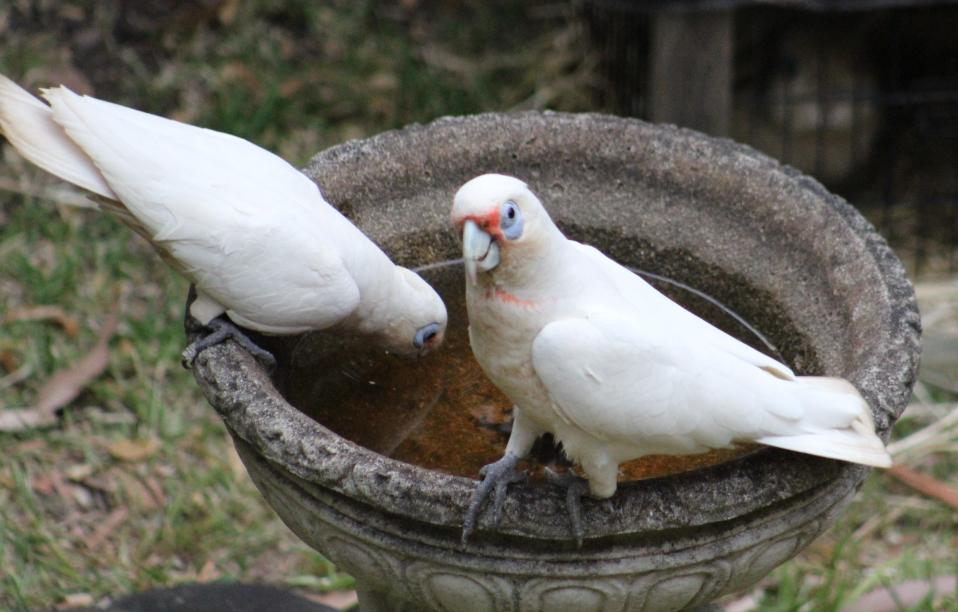
PNHA Christmas Cards Of Local Beauties
PNHA Christmas Cards with local trees, flowers, insects, birds, scenery are now ready - write your own message. $2.00 each. Contact us on pnhainfo@gmail.com to select from our big range. A few of the images available on their covers sampled here:
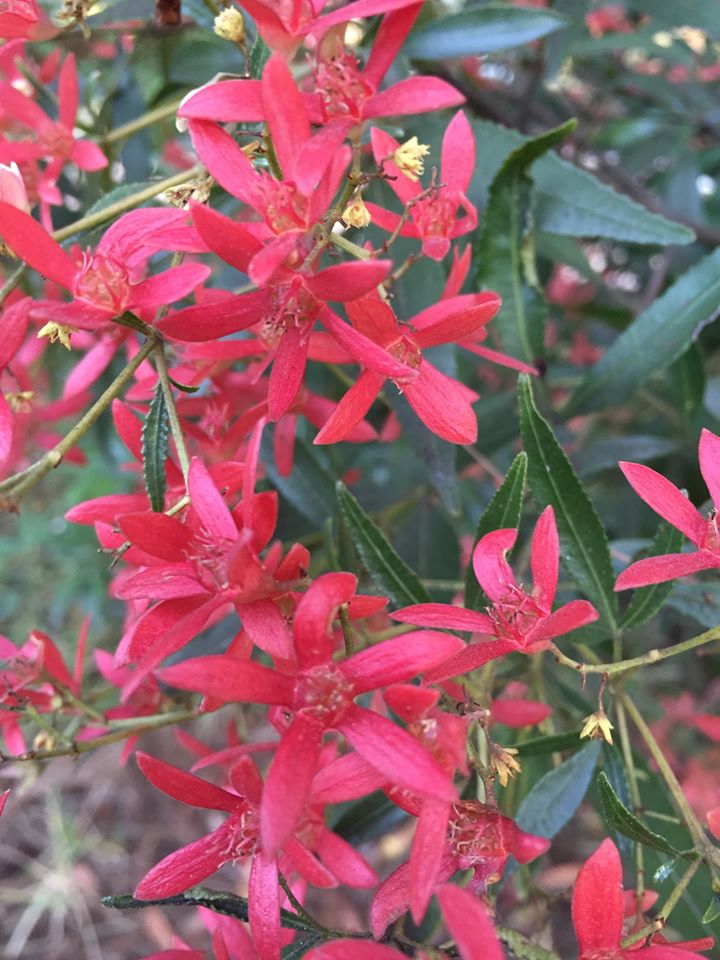
NSW Christmas Bush
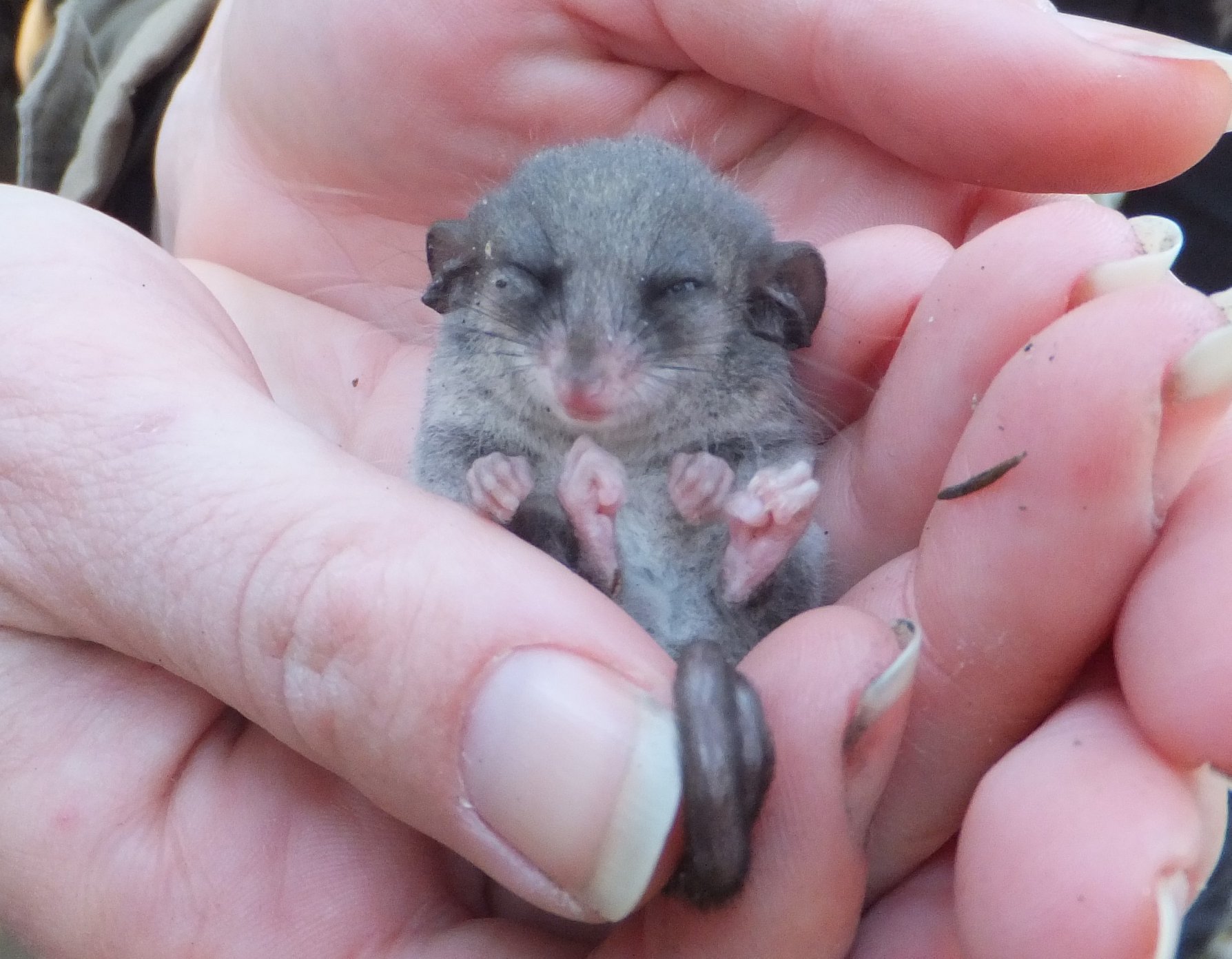
Sleepy Eastern Pygmy Possum
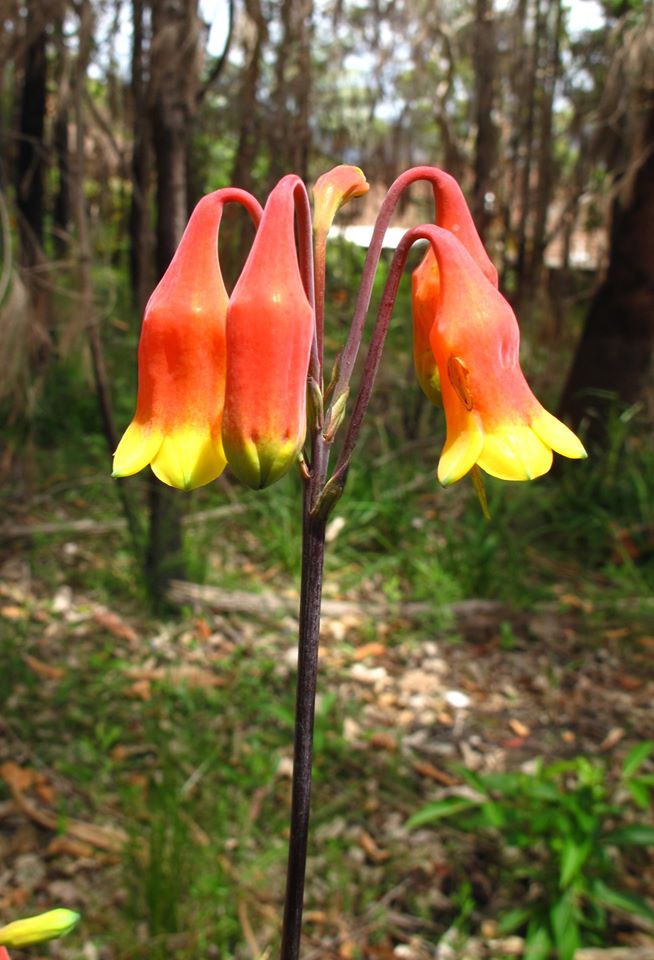
Christmas Bells
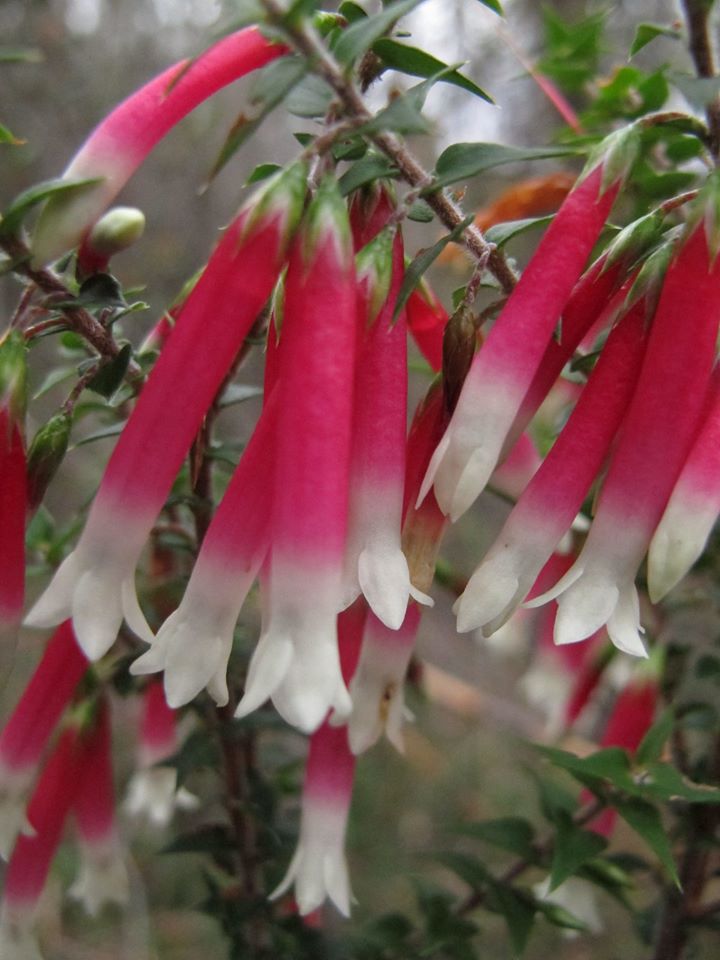
Native Fuchsia
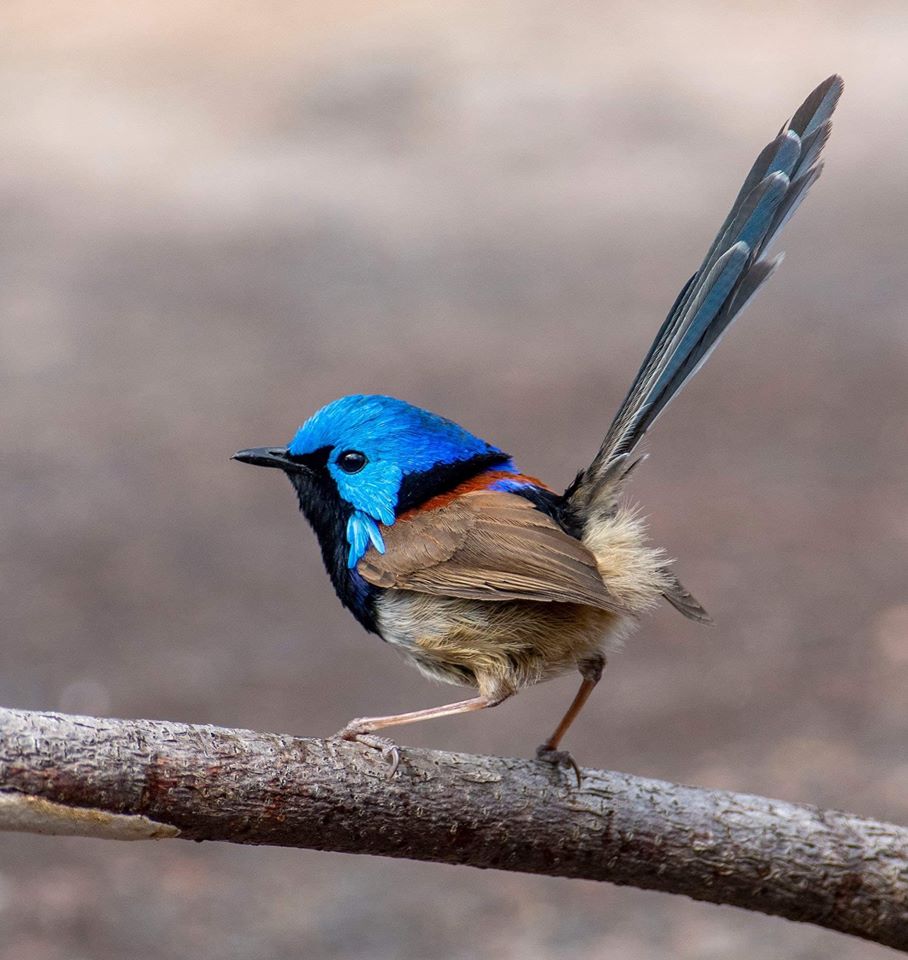
Male Variegated Wren, one of Pittwater's two Fairy Wrens. Image: Neil Fifer
Bushcare In Pittwater
Where we work Which day What time
Avalon
Angophora Reserve 3rd Sunday 8:30 - 11:30am
Avalon Dunes 1st Sunday 8:30 - 11:30am
Avalon Golf Course 2nd Wednesday 3 - 5:30pm
Careel Creek 4th Saturday 8:30 - 11:30am
Toongari Reserve 3rd Saturday 9 - 12noon (8 - 11am in summer)
Bangalley Headland 2nd Sunday 9 to 12noon
Bayview
Winnererremy Bay 4th Sunday 9 to 12noon
Bilgola
North Bilgola Beach 3rd Monday 9 - 12noon
Algona Reserve 1st Saturday 9 - 12noon
Plateau Park 1st Friday 8:30 - 11:30am
Church Point
Browns Bay Reserve 1st Tuesday 9 - 12noon
McCarrs Creek Reserve Contact Bushcare Officer To be confirmed
Clareville
Old Wharf Reserve 3rd Saturday 8 - 11am
Elanora
Kundibah Reserve 4th Sunday 8:30 - 11:30am
 Mona Vale
Mona Vale Mona Vale Beach Basin 1st Saturday 8 - 11am
Mona Vale Dunes 2nd Saturday+3rd Thursday 8:30 - 11:30am
Newport
Bungan Beach 4th Sunday 9 - 12noon
Crescent Reserve 3rd Sunday 9 - 12noon
North Newport Beach 4th Saturday 8:30 - 11:30am
Porter Reserve 2nd Saturday 8 - 11am
North Narrabeen
Irrawong Reserve 2nd Saturday 2 - 5pm
Palm Beach
North Palm Beach Dunes 3rd Saturday 9 - 12noon
Scotland Island
Catherine Park 2nd Sunday 10 - 12:30pm
Elizabeth Park 1st Saturday 9 - 12noon
Pathilda Reserve 3rd Saturday 9 - 12noon
Warriewood
Warriewood Wetlands 1st Sunday 8:30 - 11:30am
Whale Beach
Norma Park 1st Friday 9 - 12noon
Western Foreshores
Coopers Point, Elvina Bay 2nd Sunday 10 - 1pm
Rocky Point, Elvina Bay 1st Monday 9 - 12noon
Grants Available To Reduce Climate Change Impacts
Aussie Bread Tags Collection Points

Surfing NSW Unveils 2020 Event Calendar
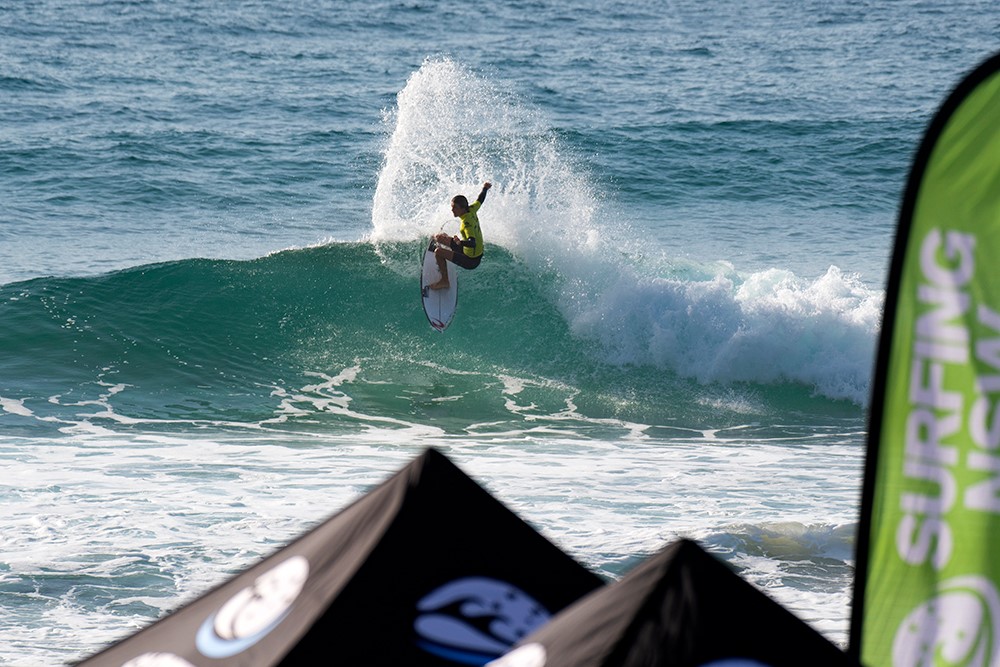
 | Surfing NSW 2020 Events Calendar.pdf Size : 262.598 Kb Type : pdf |
Christmas Card Brings Joy To The Outback
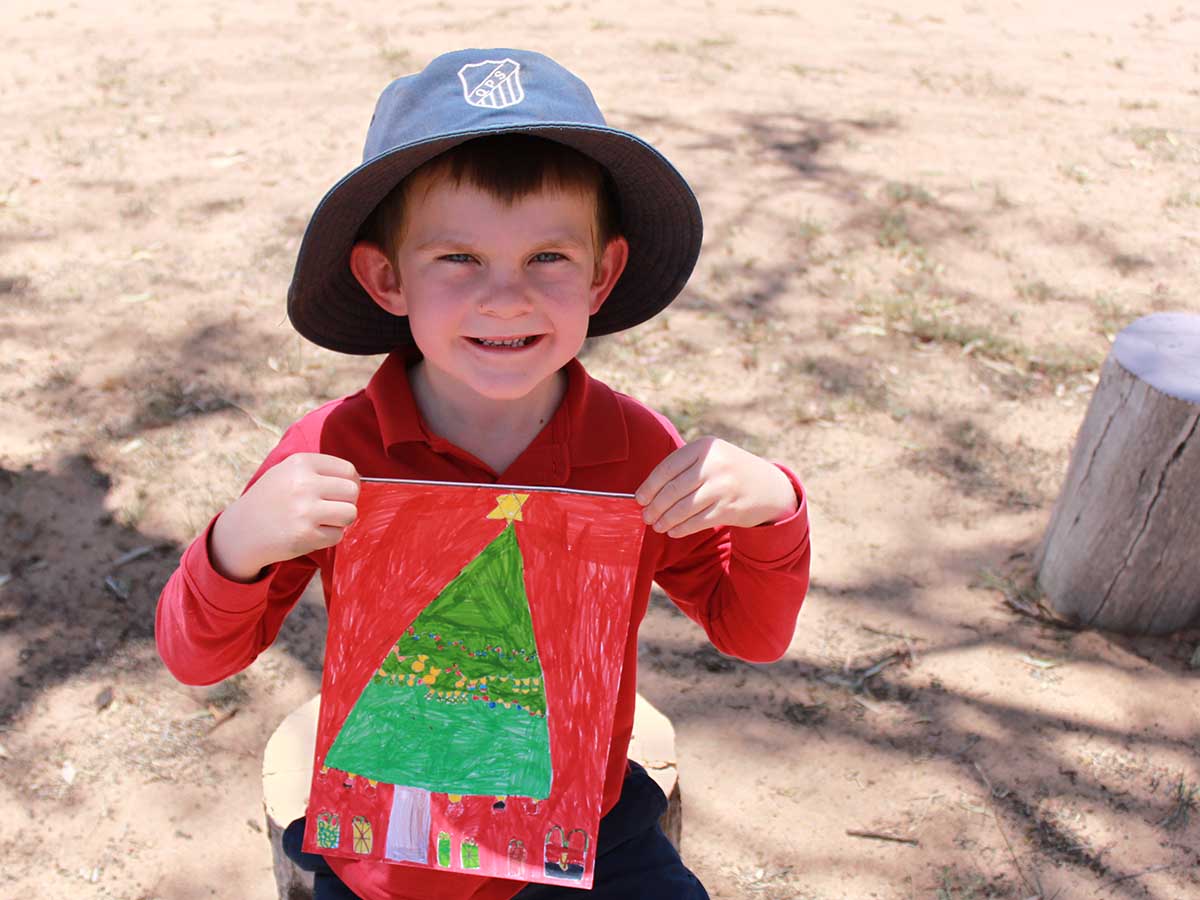
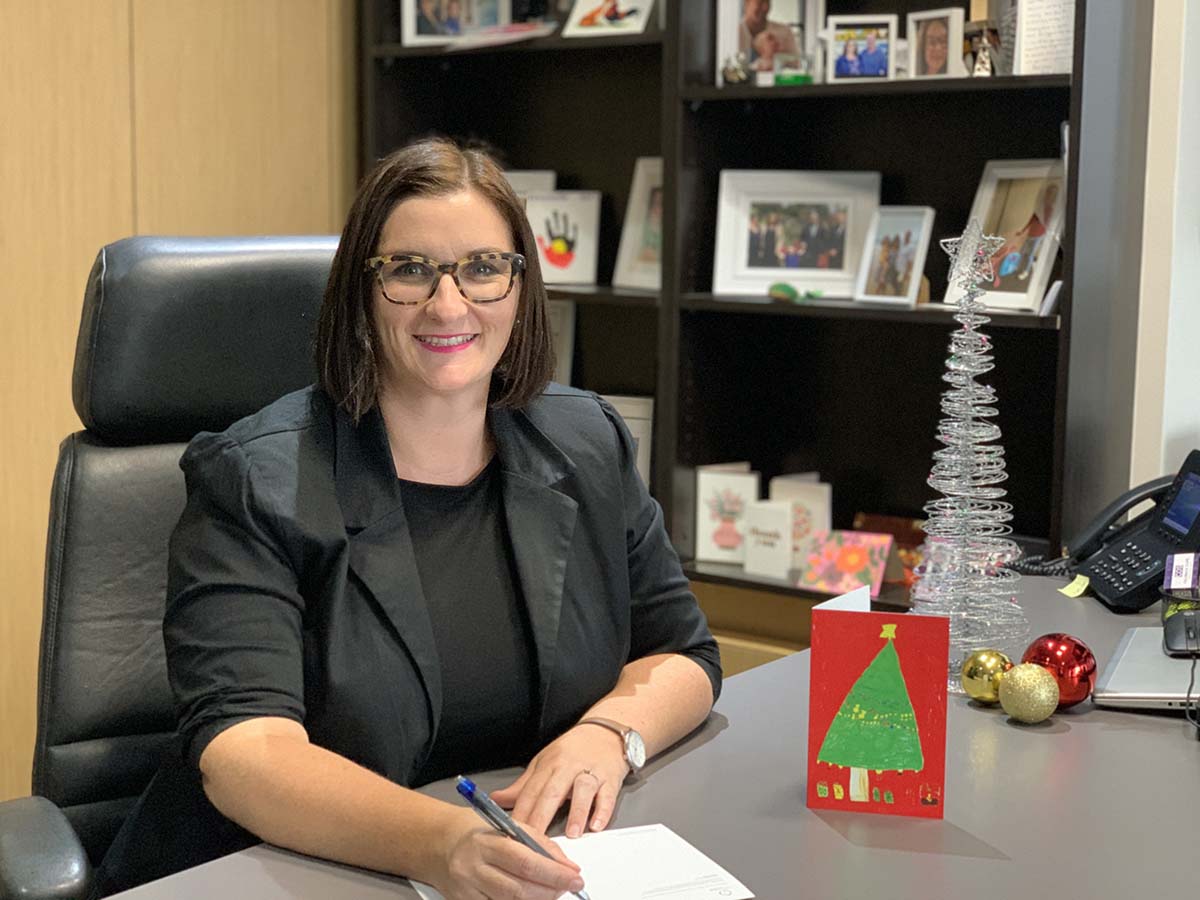
Mind-Blowing Results For Our Schools
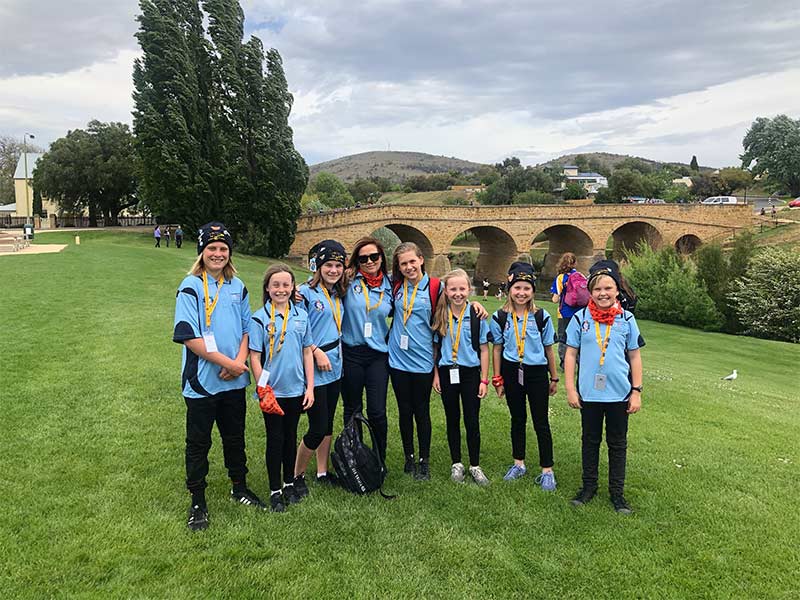
Seniors' 2020 Vision
- Increased rental assistance for pensioners
- Lower deeming and taper rates on the Age Pension
- An adult dental benefit scheme
- And a scheme for older Australians to invest in green energy infrastructure.
“At a time when politicians are calling for spending restraint and for further delays in increasing the SG to 12%, it would be symbolic if politicians moved to align their own entitlements with the current SG.”
Strengthening Independent Oversight Of Aged Care
- approving all residential and home care providers;
- aged care compliance and enforcement actions; and
- the administration of the responsibilities of approved providers to report assaults.
Going Global: Putting NSW On The World Stage
- Health
- Defence and aerospace
- Agribusiness and food
- Resources
- Infrastructure
Australian GPs Widely Offering Placebos
- 77% of GPs had offered an active placebo (such as antibiotics for a virus)
- 39% of GPs had offered an inert placebo (such as saline spray or a water-based cream)
- GPs primarily used placebos because they believed they could provide genuine benefit and viewed themselves as having a strong role in shaping patients' expectations
- 53% of GPs felt that administering placebos deceptively was unethical, but most (>80%) believed openly providing placebos -- ie with the patient's knowledge -- is ethical
- GPs felt that medical trainees would benefit from more education about placebos
New Tool To Predict The Global Spread Of Dengue
Sydney Light Rail To Open On Saturday 14 December 2019
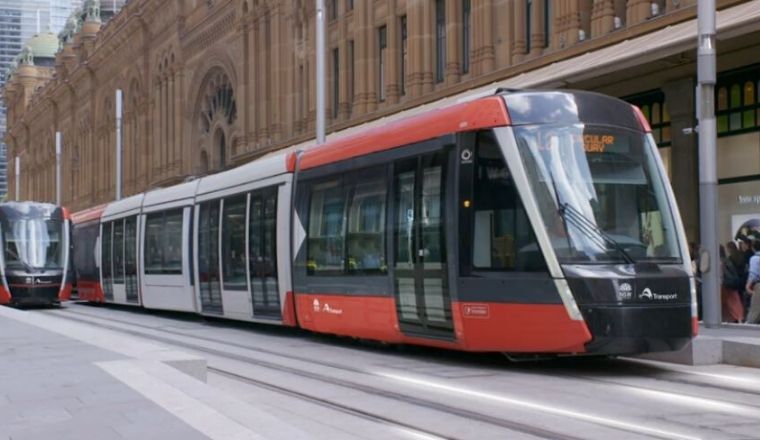
For Some Corals Meals Can Come With A Side Of Microplastics
Mobile Devices Blur Work And Personal Privacy Raising Cyber Risks
Disclaimer: These articles are not intended to provide medical advice, diagnosis or treatment. Views expressed here do not necessarily reflect those of Pittwater Online News or its staff.